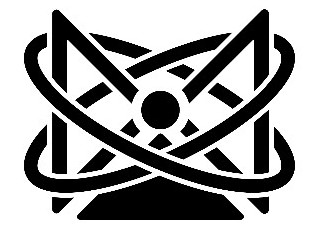![]()
Layering Theory is built on the model of reality described by the Fundamental Unit Theory of Reality. Fundamental Unit Theory offers insights into the “program” that governs our reality. You can learn about the Fundamental Unit Theory here.
Layering Theory presents a more accessible way to visualize the unfolding of the Fundamental Unit Theory “program.” Instead of imagining the vast number of individual fundamental units (10^100), Layering Theory enables us to take mental shortcuts by grouping fundamental units and their stable patterns together as we envision how our reality operates.
According to Layering Theory, reality consists of layers of units, with the smallest layer being the fundamental unit described in the Fundamental Unit Theory. The programmed nature of these units leads to stable patterns formed by combinations of these units. Layering Theory defines these stable patterns as layers, with each new layer functioning as a larger unit of reality. As the program progresses, new stable patterns emerge, and new layers form based on existing layer combinations, continuing indefinitely.
A distinctive feature of a reality layer is that each layer can have fundamental units enter and replace existing units without changing the layer itself. As per the Fundamental Unit Theory, when two units occupy the same coordinate, their directions change in equal and opposite ways, aligning with Newton’s Third Law. This implies that within a layer, when two units collide, they may exchange paths, resembling two marbles colliding head-on in a frictionless vacuum, each traveling along the same straight path in opposite directions. Consequently, fundamental units within a layer can sometimes swap with units outside the layer, while the layer remains unchanged. Thus, a layer is defined not by the specific fundamental units it contains, but by the arrangement of those units within the layer.
This property helps explain why developing a unified theory in science has been challenging. Classical physics is based on the atomic layer, and because atoms have fundamental units constantly entering and leaving, light appeared to behave differently from matter, which was believed to be stationary. The Fundamental Unit Theory model reveals that fundamental units are linked to the coordinate system of space, and layers like atoms are not tied to the coordinate system.
Considering the atom, let’s examine some layer examples:
Known atomic layers include protons, neutrons, and the electron haze. Layers within protons and neutrons are called quarks. Further study of this model will help us better understand these layers. For now, it helps us visualize how layering works, as atoms are widely known to compose reality. Roughly 10^30 fundamental units make up an atom, according to our estimates.
To illustrate Layering Theory further, consider a water molecule. It consists of two hydrogen atoms and one oxygen atom. In this case, a water molecule is a combination of two layers: the hydrogen layer and the oxygen layer, where two hydrogen atom units merge with one oxygen atom unit. Although it’s more complex than this, as additional fundamental units are also present, you can now visualize a water molecule as a layer. And maybe now you can also picture that roughly 8.36*10^24 water molecules combine to make a cup of pure water.
Without the water layer created by combining multiple water molecules, cellular layers couldn’t exist, as cells are built on the water layer, among others. Of the estimated 100 trillion atoms that make up a cell, roughly 70 percent of them are estimated to be water.
And so the cell is a layer, and so on.
Things become increasingly complex as we continue building on this model. For example, mental layering eventually emerges. Our understanding of the world is based on layers. You cannot teach someone algebra without first teaching addition, subtraction, multiplication and division. Likewise, to teach someone to read they must first be taught individual letters, each representing a layer.
As we dive deeper into the implications of Layering Theory, we can start looking at the world differently. We can begin to see the social layers our society is built on. We can see the behavioral layers that people in our lives are stuck in. We can evaluate the world in a whole new way. We can see how we are shifting from the older and less useful gasoline layer to the more flexible and powerful electric layer for vehicles. We can see ourselves exiting the pen and paper and book layer and entering the computer layer with quicker information exchange.
By delving deeper into Layering Theory’s implications, we can start perceiving the world differently. We can recognize the social layers on which society is built, the behavioral layers we get stuck in, and we can evaluate the world in a new way. We can observe the shift from the less efficient gasoline layer for transportation to the more versatile electric layer, and the transition from pen and paper to the computer layer for faster information exchange.
As we continue to explore and apply Layering Theory, we gain a more profound understanding of the interconnected layers that shape our reality. Accurate math serves as the light of creation, enabling us to develop innovative solutions and push the boundaries of our capabilities. Precise, complex mathematical calculations provide the foundation for breakthroughs in various fields, empowering us to create new technologies and improve existing ones.
On the other hand, clear and accurate scientific concepts act as the light of decision, guiding us towards making better choices in our lives. By seeing reality with more clarity we can redirect ourselves toward better ways to spend our time.
